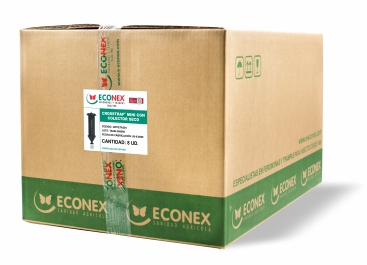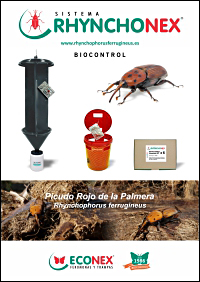General information
The red palm weevil Rhynchophorus ferrugineus is an invasive, exotic and a phytosanitary quarantine species that has been present in Spain since 1995, when it was detected in the provinces of Granada and Malaga. This insect, native to the tropical regions of Asia and Polynesia, has spread continuously to other areas of the planet, colonising different species of palm trees. It is currently one of the main pests affecting palm trees in the Middle East and North Africa. It is from these areas that the insect has been introduced to the Iberian Peninsula by traditional exporters of palm trees to Europe. The existence of important palm groves in the eastern Iberian Peninsula means that we must pay special attention to this insect.
WORLDWIDE DISTRIBUTION
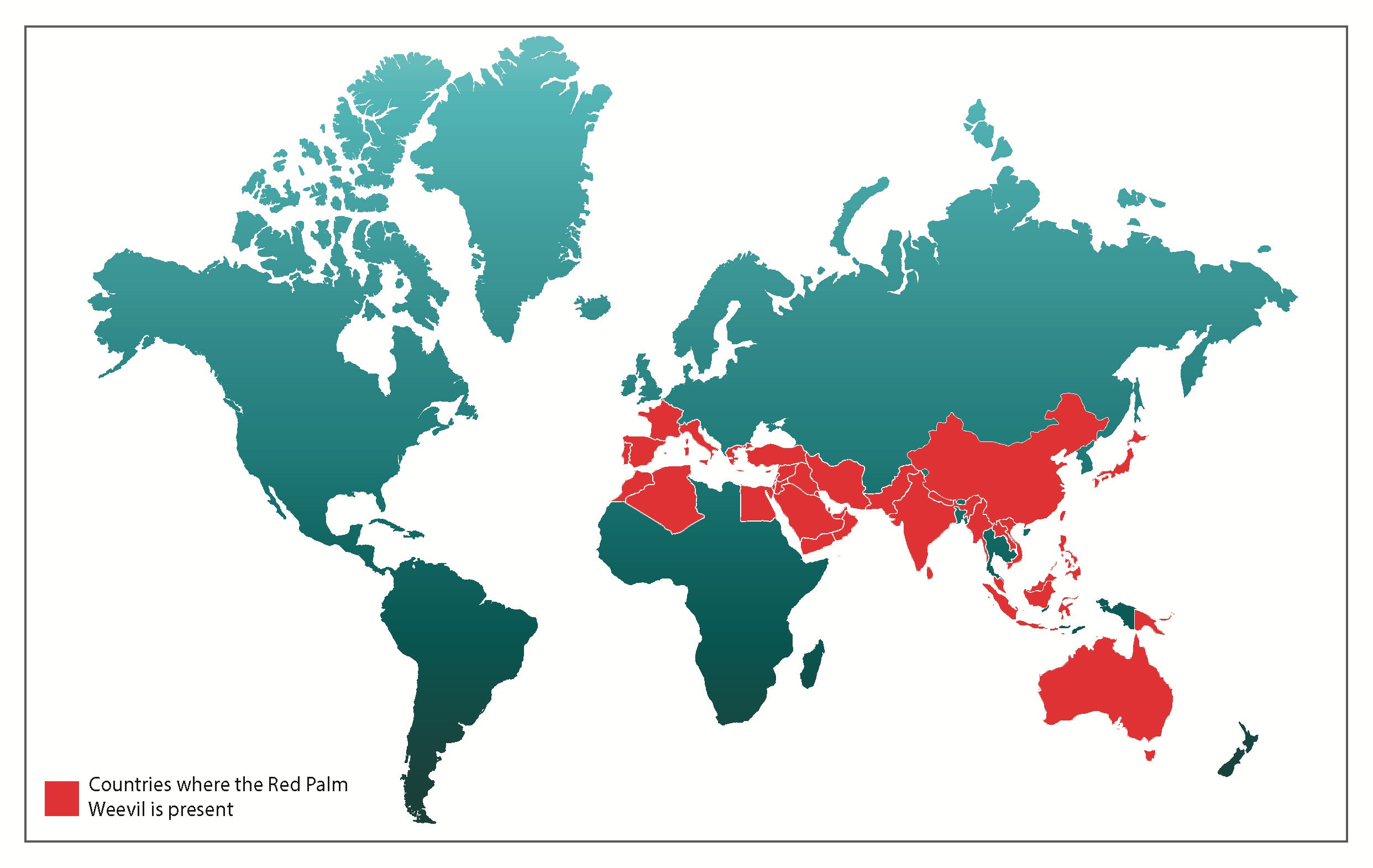
Saudi Arabia, Algeria, Aruba, Australia, Bangladesh, Bahrain, Bruma, Cambodia, China, Cyprus, Egypt, United Arab Emirates, Spain, the Philippines, France, Greece, India, Indonesia, Iraq, Iran, the Salomon Islands, Israel, Italy, Japan, Jordan, Kuwait, Laos, Malaysia, Morocco, Myanmar, Oman, Pakistan, Papua New Guinea, Portugal, Samoa, Singapore, Syria, Sri Lanka, Taiwan, Thailand, Turkey, Vietnam and others.
Morphology and biology
Rhynchophorus ferrugineus is a beetle belonging to the Curculionidae family.
Adult: Its size is quite large, reaching 2 to 5 cm in length. Insects in this family are characterised by a beak-like extension of the head (‘rostrum’), where the reddish club-shaped antennae are located. This feature, together with its striking colour, gives it the common name ‘red weevil’.
The prothorax has hugely visible black spots of different size and shape. Longitudinal stripes, also black in colour, stand out along the elytra.
Males can be distinguished from females by a dense, short ‘comb’ of hairs on the tip of the beak.
Egg: Oval in shape and laid individually in the soft tissue of the crown. Measures 1 to 2.5 mm in length. Females lay an average of 300 to 400 eggs.
Larva: It is developed inside the living tissue of the palm tree, reaching a size of between 3 and 5 cm. Initially, it is cream-white coloured, becoming darker in the final stage. It lacks of legs and it is generally pear-shaped, giving it a plump appearance. The brown head has powerful jaws that enable it to pierce the plant tissue of its host.
Pupa: It is mainly located at the base of the palms, surrounded by a good-sized oval cocoon (4 to 6 cm long), made by the larva from fibres from the palm tree itself, which is not easy to detect unless the area where it is inserted is handled.
Their reproductive capacity is highly important. In Spain, the complete cycle, from egg to adult, lasts between three and four months.
- Eggs
- - Less than a week
- Larva
- - 4 to 6 weeks, approximately.
- Pupa
- - 2 or 3 weeks, approximately.
- Adultos
- - 12 to 16 weeks, approximately.
Adults do not usually leave the palm tree where they have developed until it has been practically destroyed; therefore, several generations can exist within the same specimen, where all stages of the pest can be found at any given time. Adults have an extremely high flight capacity, which allows them to disperse widely and colonise new palm trees. They seem to favour damaged or decaying palm trees. Once the first adults reach a suitable palm tree, the males generate an aggregation pheromone that attracts numerous red palm weevils of both sexes.
Females lay their eggs in holes made with their face (or beak) in wounds created during harvesting, pruning and sucker removal.
Damages
The most common symptom that may indicate this insect attack is the wilting of the leaves in the centre of the crown, which may eventually dry out and hang down towards the ground. In very severe attacks, the entire crown dries out and the palm tree dies. When the affected outer branches are pulled, they come off quite easily and at their base we can see the larvae's tunnels and, frequently, the pupae's cocoons. When opening the crown of a palm tree with advanced infestation, abundant larvae of different sizes are found in a mass of fermenting tissue that exudes a distinctive unpleasant odour.
Affected palm trees die in the medium term as the palm heart is completely hollowed out and decomposes. Females lay their eggs in holes made with their face (or beak) in mechanical wounds created during harvesting, pruning and defoliation. The larva of Rhynchophorus ferrugineus feeds on the living tissue of the palm tree. Infested palm trees are sources of infestation for other palm trees. Pruning and damage to the trunk cause emissions and odours that attract females, facilitating infestation.
The red palm weevil colonises a large number of palm tree species. In its countries of origin, it is found on coconut palms (Cocos nucifera) and Guinea palms (Elaeis guineensis), among many others. However, in Spain, it is particularly notable for its attacks on the Canary Island palm tree (Phoenix canariensis) and the date palm (Phoenix dactylifera), which is the most representative of our palm groves. It also affects the Washingtonia palm tree (Washingtonia spp).
Detection and monitoring
1 to 3 traps per hectare should be used (at least 1 per plot). Traps must be placed with the appropriate attractant diffuser. The traps should be placed 50 to 100 metres apart and throughout the year, especially in spring, summer and autumn, as the pest's activity increases with temperature. Placing a greater number of traps per area will significantly reduce new infestations.
The traps should not be placed next to palm trees.
Thorough monitoring
For an exhaustive monitoring, the number of traps per area should be increased, depending on the situation and homogeneity of the plots: approximately a RHYNCHONEX ® 7.5 or CROSSTRAP ® MINI every 50 metres. This is translated into a density of 4 to 6 RHYNCHONEX ® 7.5 or CROSSTRAP MINI traps per hectare.
The traps must be set with the appropriate attractant diffuser. If the attractant RHYNCHONEX ® ATTRACTANTS KIT 90 DAYS is used, both females and males Rhynchophorus ferrugineus, are captured, in a ratio of 2/3 females to 1/3 males.
Period of use
Traps should be placed throughout the year, especially in spring, summer and autumn, due to the increase of pest activity with temperature.
Factors influencing the number of traps required
To decide on the number of traps, the pest population, neighbouring plantations, the level of control desired, etc. must be taken into account.
An important factor is the size of the plantations. In small, irregular cultivated fields, a higher relative density of traps is required than in larger, more uniform plots.
Another important factor is the distance between plots with the same pest. In these cases, the boundaries of the plots must be reinforced, which may require increasing the density of traps per hectare.

Average cumulative captures of Rhynchophorus ferrugineus adults per month between 2005 and 2008 in 2,876 traps distributed throughout the provinces of Alicante and Valencia, according to the results presented in López - Calatayud (2008). López - Calatayud, J.J. (2008) Campaña de detección y erradiación de en la Comunitat Valenciana: estrategias de control de picudo rojo. CONAM9. 1 to 5 December 2008, Madrid.
The RHYNCHONEX® SYSTEM
It consists of using traps, pheromones and kairomones to detect and monitor the red palm weevil: Rhynchophorus ferrugineus.
Scientific research has shown that weevils find host palm trees using a combination of sensory signals. RHYNCHONEX® SYSTEM exploits these sensory signals using sophisticated components and advanced design features in the traps.
Required material
RHYNCHONEX® ATTRACTANTS KIT 90 DAYS (Code: UIPHOVA263) consists of a RHYNCHONEX® PHEROMONE 90 DAYS diffuser and a RHYNCHONEX® KAIROMONE 90 DAYS, diffuser, in the same blister pack, for Rhynchophorus ferrugineus, , with a 90-day duration, and an identification label to be placed on the traps with the date of placement and replacement of the kit. It is sold in boxes of 6 units.
Scientific research has shown that the synergistic action of the pheromone and the kairomone acting together significantly increases the number of captures, increasing them by 2.5 to 5 times.
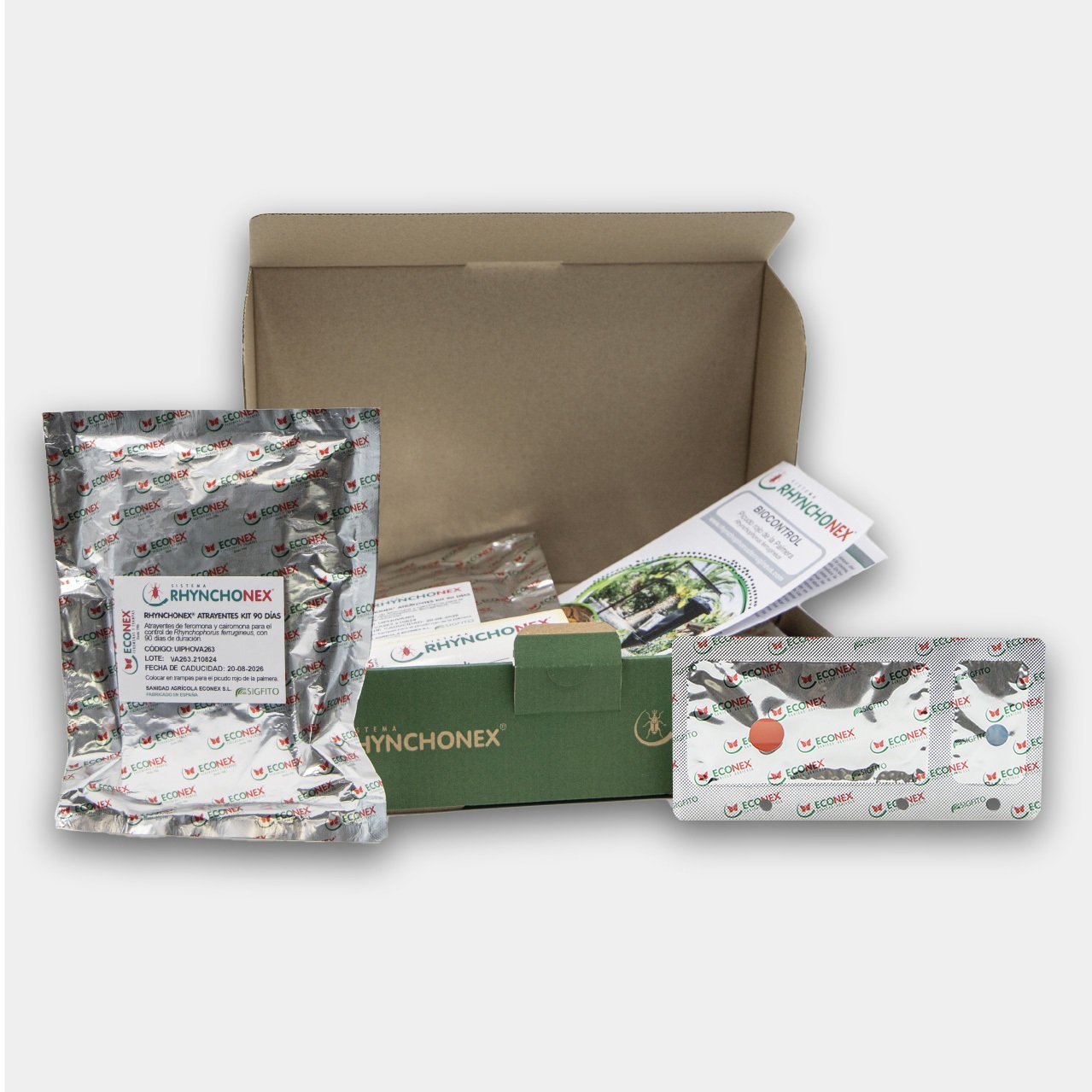
RHYNCHONEX® ATTRACTANTS KIT 90 DAYS.
Kit consisting of a blister-type diffuser with pheromone and kairomone attractants for the biocontrol of Rhynchophorus ferrugineus, sold in a box of 6 units
Code: UIPHOVA263
OMDF registration number (Spanish ministry of agriculture): 095/2024

RHYNCHONEX ® 7.5 trap
These are wet traps that are used, together with pheromones and kairomones, for the detection and monitoring of the red palm weevil Rhynchophorus ferrugineus.
They are made of a plastic polymer that does not emit odours when heated by the sun and is resistant to ultraviolet rays, with an average life span of 6 to 7 years.
They consist of three easily adjustable parts: a base, a lid and a special hanger for hanging the attractant diffuser RHYNCHONEX® ATTRACTANTS KIT 90 DAYS.
Traps incorporate a rhombic plastic mesh specially designed to stimulate the roughness of the palm tree trunk, facilitating thus the entry of weevils.

RHYNCHONEX® 7.5 TRAP
Trap designed to capture the red palm weevil Rhynchophorus ferrugineus and Rhynchophorus palmarum.
Code: UIPFETA146
OMDF registration number (Spanish ministry of agriculture): 109/2014

La trampa RHYNCHONEX® 7.5 trap has a volume of 7.5 litres. The truncated cone-shaped base is red and has four perpendicular holes measuring 3 x 7 cm so that insects can easily enter. The lid is also red and has two entrance holes measuring 3 x 7 cm.
It is a wet trap, so it must be filled with water to 2/3 of its volume.

Rhynchophorus ferrugineus Captured
in a RHYNCHONEX ® 7.5 trap.
Placement and handling
The traps should be placed semi-buried up to the entrance holes, preferably in the shade, as this will retain moisture longer.
When using RHYNCHONEX® 7.5, wet traps, the red palm weevil drowns in the water. It is recommended to slightly cover the traps with palm fronds to increase humidity and prevent water evaporation.
If buried RHYNCHONEX ® 7.5 5 traps cannot be used (due to the areas where they may be tampered with by unauthorised individuals, or kept out of reach of children in public parks and gardens), we recommend using CROSSTRAP® MINI.traps
In the natural environment, we recommend using only CROSSTRAP® MINI traps due to their high specificity.
The combination of food and pheromones increases the effectiveness of the system: dates, sugar cane, apples and bananas are foods that can be used in RHYNCHONEX® 7.5 traps.
Adding sugar-rich plant products to water (apples, bananas or dates) increases the level of catches.
CROSSTRAP® MINI
For trapping in the wild, or if you can't use buried RHYNCHONEX ® 7.5 traps, the use of CROSSTRAP® MINI WITH DRY COLLECTOR (Code: UIPFETA204).
The CROSSTRAP® MINI WITH DRY COLLECTOR trap is a suspended trap that captures flying insects and is highly effective from spring to autumn. The design and slippery coatings of the trap prevent captured insects from escaping. The trap works in dry conditions and does not require a food attractant. The insects die inside the catch collector by dehydration, which makes it very easy to handle. The traps can be hung from natural or artificial supports, but always far enough away from palm trees.
The trap consists of a 33 cm diameter polypropylene lid with a hanger in the centre attached to it with a spring. Two reinforced PVC sheets are anchored at the top of the lid by four springs, which act as dynamic suspension elements, serving as shock absorbers for the strength of the wind exerted on the trap and thus preventing it from breaking in the field. They are mechanically attached at the bottom to a 30 cm diameter polypropylene funnel. At the bottom of the funnel isthe catch collector, which is attached to it with screws.
The sheets, funnel and collector are treated with a lubricant that significantly increases catches and prevents insects from escaping.
The trap measures 33 cm in diameter and 100 cm in height when unfolded. When folded, it measures 33 cm in diameter and 40 cm in height.
The trap can remain operational for up to 7 years due to its nature and high-strength components.
.jpg)
CROSSTRAP® MINI WITH DRY COLLECTION CUP (with slider)
Trap for intercepting coleopteran insects during their flight.
Code: UIPFETA204
OMDF registration number (Spanish ministry of agriculture): 153/2013

The traps should be hung by using a string, either between two trees or from a branch, always taking care that the trap is vertical and does not come into contact with the trunk of the supporting tree.
This ensures that the trap does not knock against anything and break, and also ensures that the insects are able to distinguish it from the trunk and are attracted to the trap. They should be kept away from palm trees for at least 5 meters. It is best to install them in areas without palm trees.
The trap is activated by placing RHYNCHONEX® ATTRACTANTS KIT 90 DAYS in the hole in one of the trap's sheets using the clip provided.
The installation height of the trap is not important, as long as the capture collector does not touch the ground or any other object theECONEX SUPPORT FOR FOREST TRAPS (Code: TA147) designed for this purpose, can also be used for installation.
The trap is used with the CROSSTRAP® DRY COLLECTOR (Code: TA157) for dry use or live capture. The collector has an approximate capacity of 2 litres, measures 12.5 cm in diameter by 19 cm in height, and is equipped with a stainless-steel mesh bottom that drains 100% of rainwater and facilitates ventilation.
Composition
The traps consist of a polypropylene lid with a central carabiner attached to a stainless-steel spring and two reinforced PVC sheets anchored at the top to the lid by four stainless steel springs that serve as shock absorbers against strong winds, helping to prevent damage to the trap. At the bottom, the reinforced PVC sheets are held in place by steel springs to a 30 cm diameter polypropylene funnel. At the end of the funnel is the container for retaining the captured insects.
The PVC sheets, funnel and collection cup are treated with a sliding film.
New funnel:
To help reduce environmental impact, a removable funnel has been launched in 2024, following several years of research, which optimises trap transport and reduces carbon emissions.
Types of collectors:
Depending on the purpose of the trap, choose between the CROSSTRAP® DRY COLLECTOR (with slide) or CROSSTRAP® WET COLLECTOR (with slide).
The CROSSTRAP® DRY COLLECTOR (with slide) container has a stainless-steel mesh at the bottom that allows rainwater to drain out. It has a capacity of 1 litre approximately (11 cm diameter x 13.5 cm high). It is used for dry or live capture.
The CROSSTRAP® WET COLLECTOR (with slide) container has a capacity of 1 litre approximately (11 cm diameter x 13.5 cm).
Wet catches allow for accurate identification of the catch. To do this, we recommend filling the collector with 10 ml of propylene glycol diluted to 10 or 20%, or, if necessary, using car antifreeze. This liquid serves both to kill the catch and as a preservative, as long as it is not diluted too much by rain, in which case it should be replaced.

CROSSTRAP® WET COLLECTION CUP (with slider) 1 L
Collection cup for wet catches, located at the bottom of CROSSTRAP® traps.
Code: UIPFETA311


CROSSTRAP® DRY COLLECTION CUP (with slider)
Collection cup for dry use, or live catches, located at the bottom of CROSSTRAP® traps.
Code: UIPFETA157

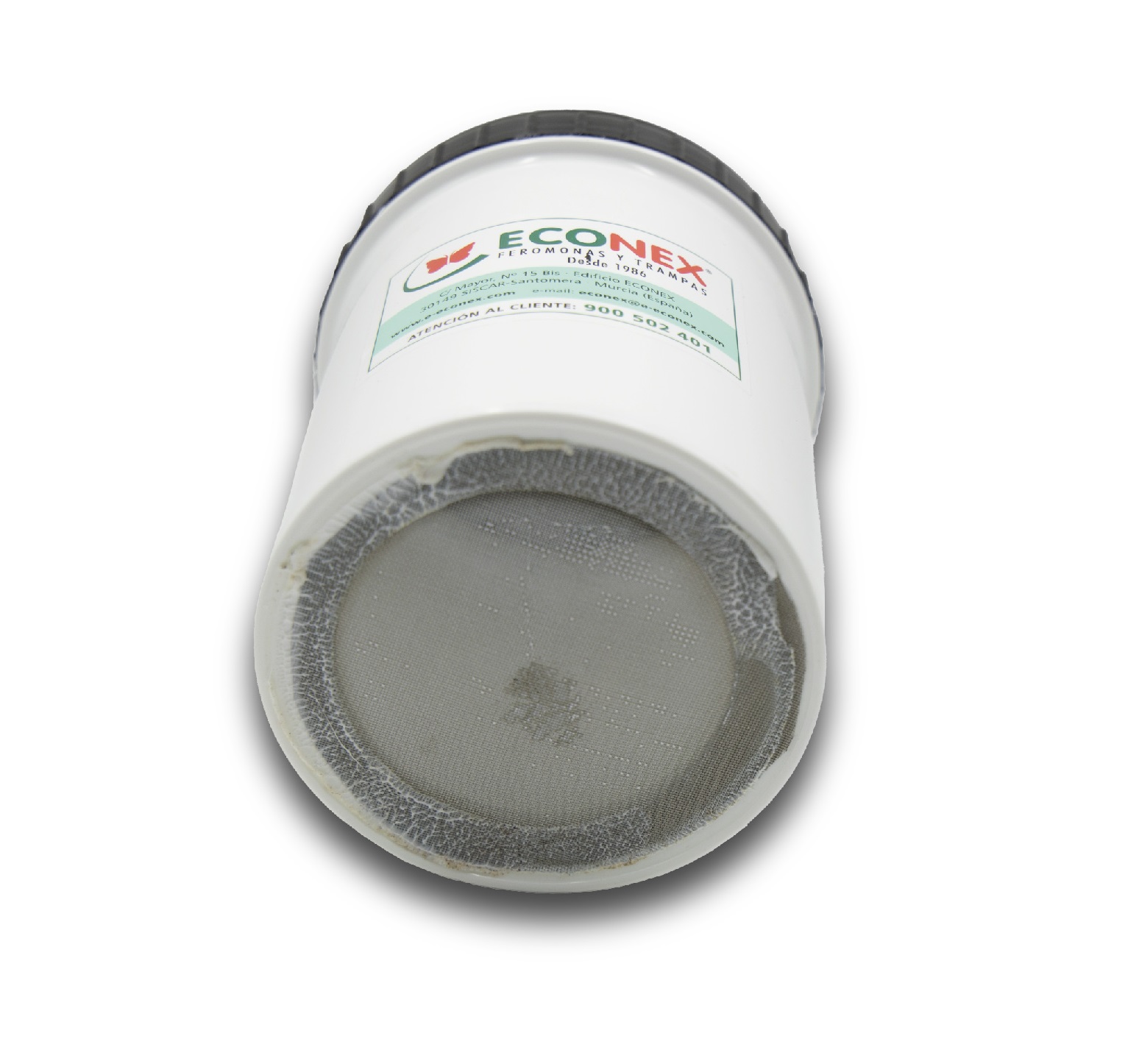
CROSSTRAP® DRY COLLECTION CUP
Lower view
Tips for setting traps
- Regularly check palm trees in affected areas.
- If a red palm weevil infestation is suspected or detected, cleaning and protecting the trees using and authorised plant protection product is required.
- All dead palm trees and parts of trees containing the pest must be destroyed in accordance with regulations.
- When pruning during spring and summer, an authorised phytosanitary treatment should be carried out after pruning. Pruning should preferably only be carried out during winter due to the lack of activity of the pest. Pruning debris should always be shredded or chopped up and burned.
- Clean the crown of dry palms to allow for regular inspection.
- It is important not to brush the trunk, as this encourages infestation.
- Palm trees affected by leaf and shoot rot diseases are more prone to red palm weevil infestation and should therefore be treated with a fungicide and insecticide. It is essential to prevent weevils from laying eggs in these areas.
- As part of an integrated eradication or control strategy, capturing adult red palm weevils with RHYNCHONEX® SYSTEM is essential.
- Take the time to learn about the behaviour of the pest and how to use RHYNCHONEX® SYSTEM to detect and monitor Rhynchophorus ferrugineus.
RHYNCHONEX® 7.5
Corrugated cardboard box containing 30 units.
Box dimensions: 0.60 x 0.80 x 0.48 m (width x length x height).
Box weight: 10.70 kg
Number of boxes per pallet: 8
Pallet dimensions: 0.80 x 1.20 x 2.05 m (width x length x height).
Pallet weight: 96 kg.
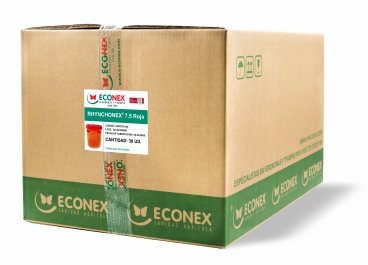
Box with 30 units.
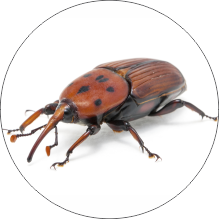



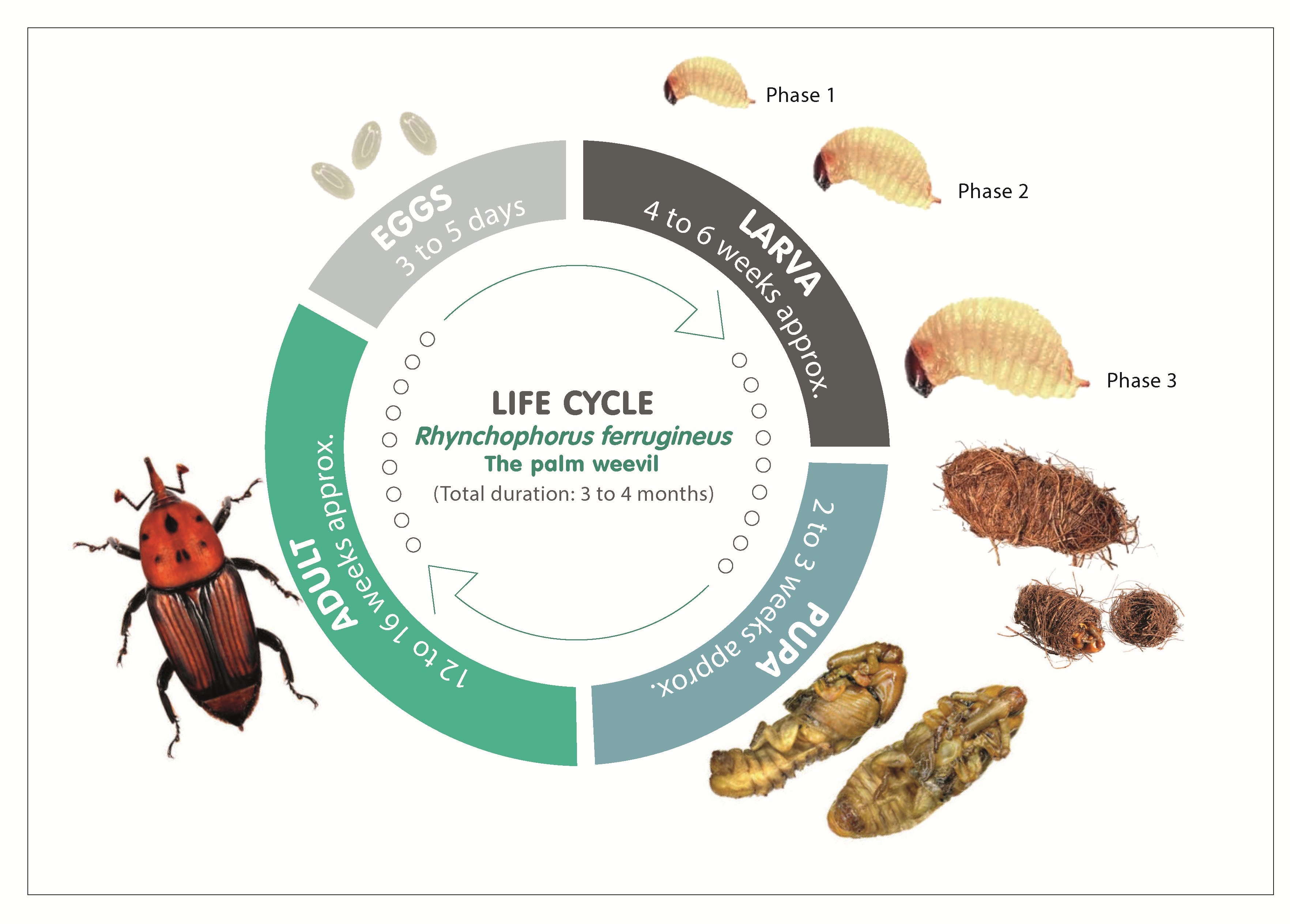
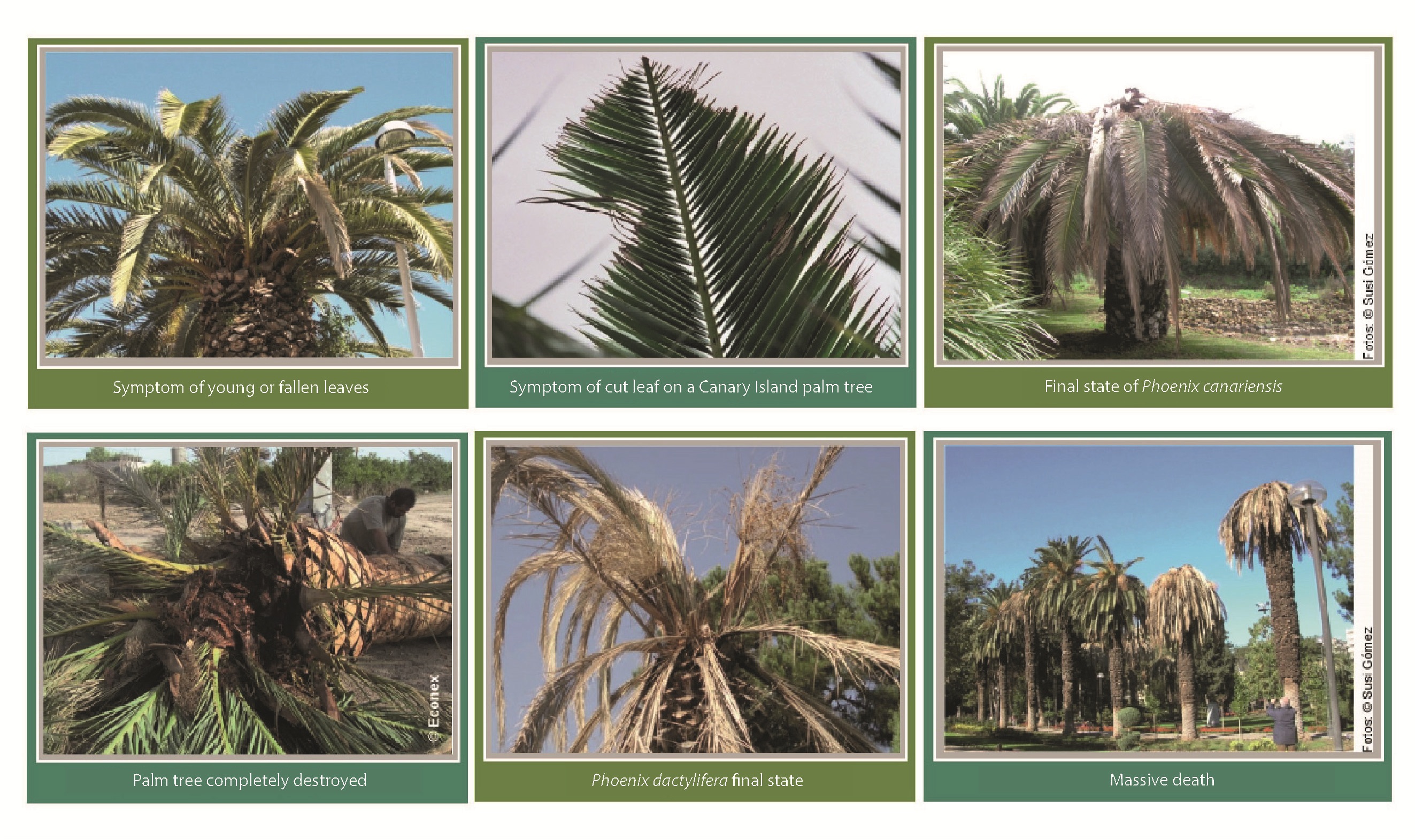






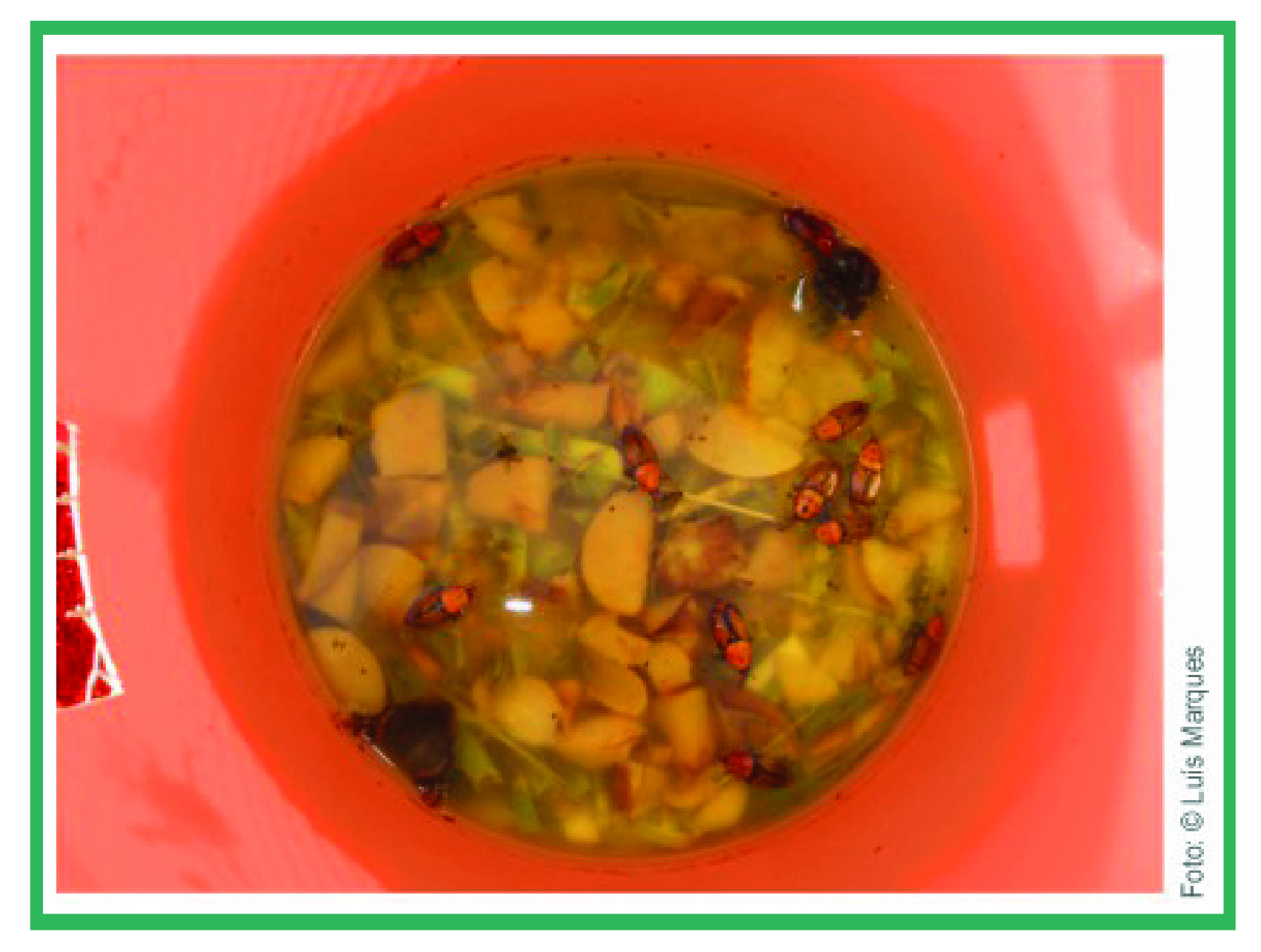
.jpg)







